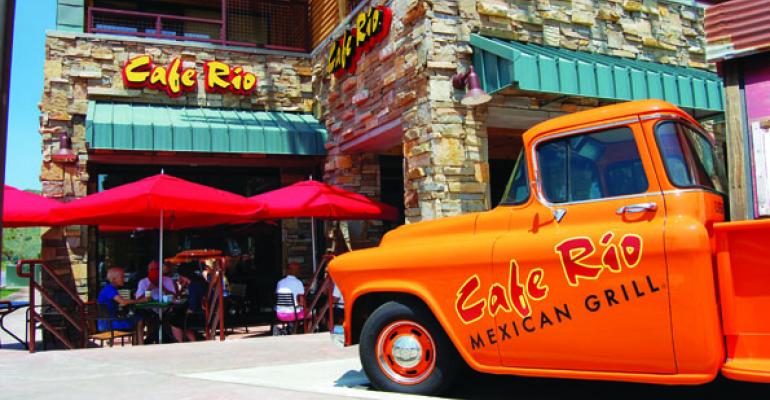
![]() The first time Bob Baker visited a Cafe Rio Mexican Grill, a customer queue snaked from the front door to the sidewalk — 20 minutes before the restaurant even opened for lunch.
The first time Bob Baker visited a Cafe Rio Mexican Grill, a customer queue snaked from the front door to the sidewalk — 20 minutes before the restaurant even opened for lunch.
“I’d never seen anything like that,” said Baker, then a KFC executive, but now Cafe Rio’s president and chief financial officer. “Customers were excited, and it wasn’t even open yet. When I got inside and had the food, I understood.”
The 58-unit fast-casual chain’s lunchtime crunches have grown so large the company started promoting its to-go service for customers lacking time to dine in. It opened a nationwide call center and rolled out online ordering to better manage to-go and catering call volume.
It also added phone lines — a typical Cafe Rio has eight incoming lines — at each store, plus a separate make-line to serve to-go orders, which comprise about 15 percent of sales.
Founded in 1997, Cafe Rio joined Chipotle Mexican Grill, Qdoba Mexican Grill and Moe’s Southwest Grill in the hotly contested Mexican fast-casual segment. But chief executive Dave Gagnon said the concept differentiates itself with its broader menu and scratch preparations.
“Every tortilla comes from flour, water and shortening mixed in our restaurants and made fresh all throughout the day,” said Gagnon, a Taco Bell and Burger King veteran. Open kitchens allow customers to see meat roasting and fruit juice being squeezed fresh for drinks, he added. “Our menu is much broader and more diverse than most of our competitors.”![]() Unit sales average just above $2 million in stores that seat 100 and range from 2,800 square feet to 3,500 square feet. Finding new sites hasn’t been a challenge, Gagnon said, partly because the company’s fiscal fitness impresses landlords at “A” locations.
Unit sales average just above $2 million in stores that seat 100 and range from 2,800 square feet to 3,500 square feet. Finding new sites hasn’t been a challenge, Gagnon said, partly because the company’s fiscal fitness impresses landlords at “A” locations.
The company is very selective about the sites it chooses, Gagnon said, adding that Cafe Rios typically land in strip centers and endcaps.
“[Landlords] like us as customers because we have all company stores and a great balance sheet,” he said.
The company plans to add as many as 15 units in 2013, but Baker insisted it will not expand beyond its ability to staff new restaurants and train employees.
Will such measured growth leave the concept in the wake of its fast-growing competitors? Consultant Fred LeFranc doesn’t think so.
“The greater risk is going too fast and not doing it properly, and the landscape is littered with concepts that took off too fast and slammed into the wall,” said LeFranc, president of Results Thru Strategy and a restaurant chain veteran. He said Cafe Rio is well-positioned in the Mexican fast-casual category.
“They’re growing at a good pace,” he said. “And the places where they’ve gone — tough markets like Southern California — they’ve done well in.”





